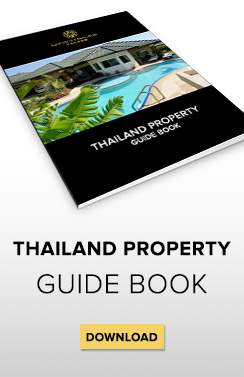Thai Tourism: The Chinese Keep Coming
Strong demand by Chinese travellers for holidays in Thailand continues to boost the Thai tourism industry.
Thanks to Chinese visitors, tourism has become the single biggest source of growth in the Thai economy, which would be locked in decline without it.
But the surge in visitor numbers is also putting visible strain on the country’s travel infrastructure.
The number of Chinese visitors swelled by more than 71 per cent last year, taking growth in overall arrivals to more than 20 per cent. Growth from all other visitor nations was just 8.8 per cent.
As a result, Thailand received a record 29.9m international tourists last year — the most ever to visit an Asian country with the exception of China itself — of which 7.9m came from mainland China, more than a quarter of the total.
Just five years earlier, China accounted for a mere 7.9 per cent of all arrivals.
However, the 2015 growth figures are inflated by a low-base effect: violent political protests in Bangkok scared away many tourists in 2014.
Nevertheless, arrivals growth from China has continued to soar through the year-end peak season, with 29 per cent growth in December and 45 per cent in January.
The influx of Chinese tourists has been a big help to Thailand’s economy, which continues to be squeezed by falling exports, tepid consumption, weak commodity prices, and political instability. International tourism spending accounts for 11.4 per cent of gross domestic product and has become the economy’s most import source of growth.
GDP expanded 2.9 per cent in 2015 and would have grown just 0.6 per cent without the direct impact of foreign tourism spending. Without domestic tourism and the secondary impact from the tourism industry GDP growth would be near zero, according to FT Confidential Research, a research service.
Yet as hotel operators and souvenir hawkers rejoice, the swell in tourist arrivals has tested Thailand’s airports and transportation.
Both international airports in Bangkok have suffered from ever-longer immigration and security queues. At Don Mueang, the smaller of the two airports, travellers complain of very long waits for taxis. Phuket International Airport, the country’s third busiest, has doubled its intended capacity of 6.5m passengers a year, though a long-overdue new terminal may finally open in a few months.
Source:Financial Times
Thailand wins accolades in Ctrip’s popular tourist destination awards
Thailand’s top tourist destinations figured prominently in the latest Ctrip Best Destination Awards, scoring impressive rankings across most major categories.The rankings and awards were based on the responses of more than 250 million Ctrip users.
Ctrip.com International, founded in 1999 in Shanghai, employs more than 30,000 people at branches in major cities in China, Hong Kong, Taiwan, Singapore, South Korea and Japan.
Thailand’s top tourist destinations ranked close to the top in most of Ctrip’s award categories.
Bangkok came in second and Chiang Mai ninth in Ctrip’s Best Overseas Destination awards.The Thai capital ranked eighth in the category Best Destination for Students. Chiang Mai also figured 10th in the Most Popular Destinations for Self-Guided Tours.
Phuket and Krabi ranked high in the Best Island Destination category at third and seventh.
Another popular island destination, Samui in Surat Thani province on the Gulf of Thailand, ranked in sixth place in the Most Potential Destination category.
Srisuda Wannapinyosak, deputy governor for international marketing for Asia and South Pacific at the Tourism Authority of Thailand, said recently that the success was due to TAT’s strong commitment to work with China’s outbound travel companies through marketing strategies that target high-income, quality tourists.
“This is reflected in our efforts to draw Chinese newlyweds to Thailand for their honeymoon and golfers to play on our world-class courses.”Thailand attracted 7,934,791 Chinese last year.
Visits generated estimated revenue of Bt400 billion. Market surveys indicate that the average spending per Chinese visitor stands at Bt47,000 per trip.
This year, TAT rolls out campaigns based on a strategy to attract up-scale Chinese travellers.
One of the projects is the Thailand Photo Contest, which will sponsor Chinese photographers on a tour of specific routes in Thailand from March 17-24. Their photographs will be judged by the Royal Photographic Society of Thailand and revealed on April 8.
Source:THE NATION
Investing in Pattaya
Pattaya, a city south of Bangkok and a mere 90-minute drive away from the capital, is renowned for its vibrant nightlife and beautiful beaches. The city is also acclaimed for its Eastern Seaboard, which houses a large automobile production industry. Charoen Pokphand Group together with two major investment partners – from Hong Kong (CITIC Construction) and China (HNA Group) – have recently confirmed a THB1.52 trillion proposal for the Bangkok to Pattaya high speed train service. Scheduled to complete in year 2020, the proposed bullet train will have a tremendous effect on the future growth and property prices of Pattaya.
In collaboration with Sansiri, Golden Emperor hosted a seminar on investing in Pattaya properties. Baan Plai Haad, Sansiri’s latest project with a starting price of HKD850,000 and situated in the luxurious Wongamat area, was featured.

Above: Terence Chan, Director of Golden Emperor, provided a presentation on the Pattaya property market
Why Thailand’s tourism industry is smailing again?
Think temples, palaces, beaches and vibrant nightlife, and chances are Thailand comes to mind, while political turmoil in 2013 and 2014 hit the hospitality sector hard in Thailand, 2015 brought renewed optimism and a record 29.9 million international travelers to its shores.
For a tourist hub like Thailand, which ranks among the top 10 preferred holiday destinations globally, the prolonged unrest in 2014 could have spelled disaster. However, according toMike Batchelor, Managing Director for Investment Sales (Asia) at JLL Hotels & Hospitality Group, the impact it had on the Thai hospitality market was barely “a hiccup”.
He believes the country’s remarkably resilience in the face of coups, airport closures and natural disasters may have played a role in minimizing the extent of the damage.
If that is true, it would be little surprise that in the year leading up to September 2015, year-on-year growth in tourist numbers to Thailand was 49.9 percent. So has the Thai tourism sector finally turned a corner?
Tourists turn to Thailand
Recent news reports certainly indicate so by forecasting that a million foreigners will visit the Kingdom during the Lunar New Year celebration alone from February 6 to 14, 2016. The projection is equivalent to a 19 percent increase in arrival numbers over last year’s Chinese New Year, according to The Nation. Also encouraging is the revenue forecast of 29 billion baht ($8 billion), representing a 32 percent rise over the same period last year.
This is set to build on a strong start to the year with two million foreign visitors and spending rising by 16 percent compared to the same period last year.
Batchelor points to increased activity from the low-cost air carriers that are flying tourists to transport hubs such as Surat Thani and U-Tapao, which in turn service popular destinations such as Koh Samui and Pattaya respectively. Pattaya, for example, is expected to see a 13 percent rise in tourists when AirAsia connects Thailand with Chinese cities such as Nanning and Nanchang.
Other factors likely to bump up arrivals in 2016 include the recent introduction of multiple-entry six-month visas, the re-opening of Terminal 2 at Bangkok’s Don Mueang airport and an almost completed expansion of Phuket airport, which will increase capacity from 6.5 million to 12 million visitors a year.
7% price rise predicted
Real estate firm Nexus Property Marketing has revealed its prediction that the residential property market in Bangkok will continue growing at a steady pace.
It said that new supply in the condominium market will likely add 50,000 units – with a rise of at least 7 percent in prices. It said that inner-city condos will see a higher increase in prices than the suburban market.
Supply
During 2015 there were a total of 53,500 condominium units from 111 projects launched in Bangkok, resulting in the total number of condominium in the market rise by 13 percent from 2014 to 447,000 units. The growth rate of condominium supply during the past five years has been approximately 22 percent per year.
During the past two years growth was slowed but, according to the firm, represented a good sign of market adjustment to suit the overall economic and market situation.
The top three locations where new supply rose during the previous year were, in orderm Phra Khanong – Suan Luang, Tiwanon – Rattanathibeth and Phetchakasem – Thon Buri. All of these three zones are along an extension line of the mass-transit network.
Demand
For condominium demand average sales of condominiums that were newly launched in the market was 59 percent in 2015. Sales of the existing condominiums in the market totaled 54,000 units last year, and accumulative sales of condominium totaled 393,000 units which represented an overall sales rate of 89 percent, the firm noted.
Price
Average condominium prices continued rising with an increase of up to 10 percent from THB 96,000 per sqm to THB 106,000 per sqm in 2015, particularly for the inner-city condominium market. This was mainly due to high land costs and products which are in the premium grade category.
For new projects launched in those three locations mentioned above along an extension line of the mass-transit line, selling prices were approximately between THB 68,000 per sqm and THB 76,000 per sqm.
Source: Thailand Property














